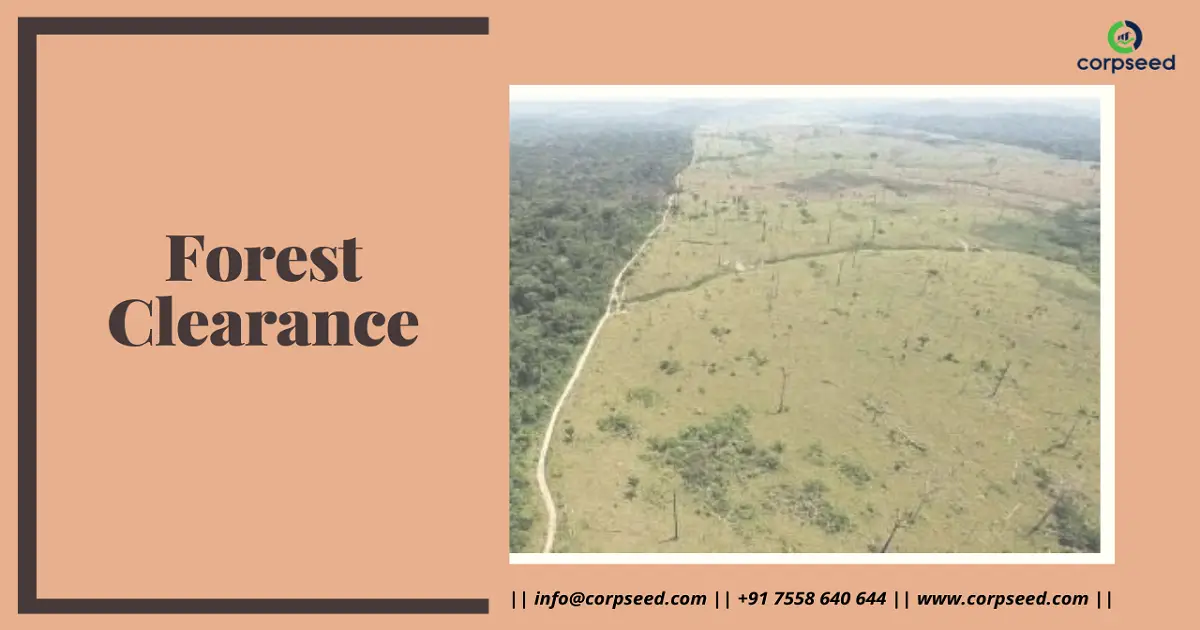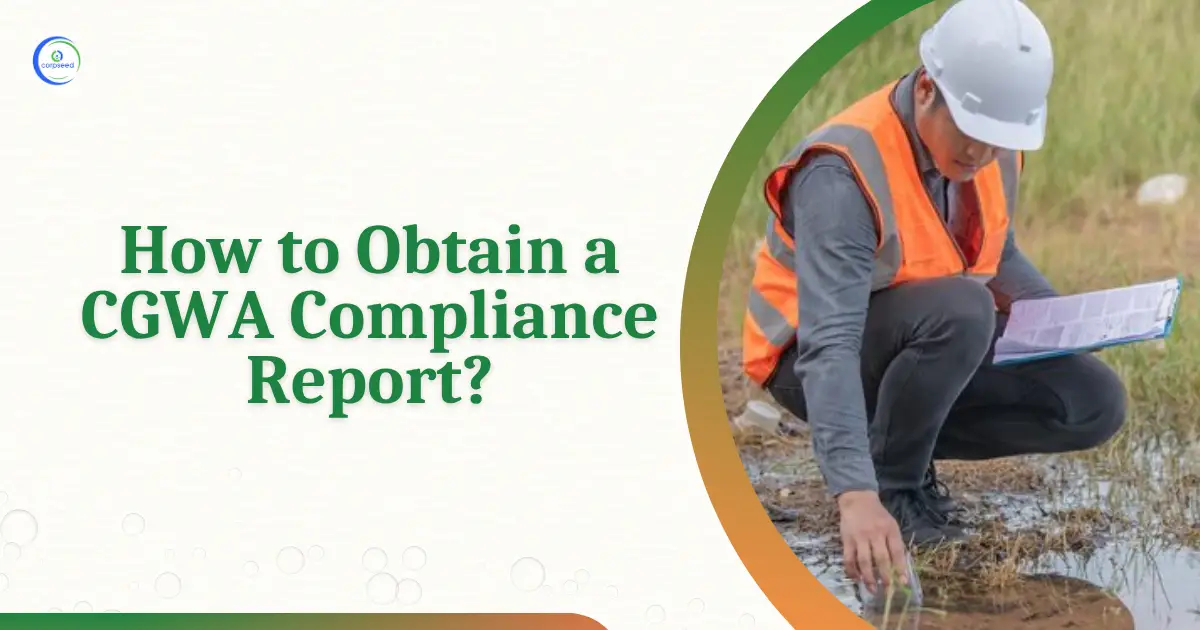Introduction: Forest Clearance
Forests are the respiratory organ of the nation and provide many ecological services like oxygen, clean water, maintenance of soil moisture by checking soil erosion, etc. Forests maintain environmental stability and ecological balance. Forests with a vast variety of flora and fauna are home to biodiversity. Forests directly sequester Carbon dioxide from the atmosphere and play a critical role in checking global warming and climate change. Forests check the extension of sand dunes to prevent desertification. Healthy forest ecosystems are necessary for further land degradation in the country.
Table of Contents
--------------Blog Contact Form-------------
India is a developing Nation with a land area of a total 328.7 million hectares of which 142.5 million ha. (43.3%) is under farming practice & rest is the Forests cover 75.6 million ha. (23.27%).
A forest is a large area that is occupied by trees, plants, herbs, and shrubs or a forest may be defined as an ecosystem where plants and animals live together. Trees, animals, and land all together constitute a forest.
At present the total forest cover is 708,273 square km, which is 21.54 percent of the total area of the country.
In terms of forest cover, Madhya Pradesh has the largest forest cover of 77,414 square km in the country, followed by Arunachal Pradesh at 66,964 square km and Chhattisgarh at 55,547 square km.
Forests are very essential part of the earth or living Beings, we all depend directly & indirectly on forests for our livelihood,
Types of forest
According to Forest Conservation Act, there are 3 types of forest i.e. Reserved Forest, Protected Forest & Unclassified Forest. The following classification is on the basis of the degree of protection & activities banned.
- Reserved Forest
These forests are regarded as the most precious as far as the conservation of forests and wildlife is concerned. Almost half of the total forest land has been declared as reserved forests for conservation & to maintain the integrity of the forest. Jammu & Kashmir, Maharashtra, Kerala, etc. have the largest %age of these.
Activities like hunting and grazing are banned unless specific orders are issued otherwise
- Protected Forest
These are protected from any further depletion. Almost one-third of the total forest area is protected forested area. Bihar, Punjab, Haryana, etc. have a bulk of it.
In protected forests, all activities like hunting, grazing, and livelihood intake are permitted unless it is prohibited.
- Unclassified Forest
These belong to the local individuals or communities & government as well. All North-Eastern parts and parts of Gujarat have these forests. This region of the forest has no restriction on the cutting of trees or cattle grazing, it is free from restriction.
What is Forest Clearance?
Forest Clearance may be defined as a procedure given by the central or state government to clear or diversion of forest land for non-forest produce.
Many rules are there for the protection of forest land i.e. Forest Act, Forest (Conservation) Act, and Forest Policy, all these acts & policies emphasize on the conservation of forest land.
FCA allows the diversion of forest land for construction and society welfare purposes e.g. drinking water purposes (well, lake, canal), irrigation(dam), electricity generation purposes, railway lines, highways, defence-related projects, mining, etc., and for that Forest Clearance is required
What is the Importance of Forest Clearance?
As the population is increasing day by day for catering the need of the increased population, resources shall also be increased and by this Industrialisation & development is increasing at a very high rate to fulfill the need of everyone.
For new projects, industries, and institutions land has to be required; some project requires the diversion of forest land. After getting permission from the concerned department only then forest land can be diverted.
Forest Clearance is a very crucial process & it takes time because every aspect of the project is been carefully studied & after scrutinizing all the documents Moef & CC grant permission or reject the proposal.
The GOI (MoEF & CC) with the forest department conducts the survey of the forest land which is supposed to be diverted for the non-forest land purpose.
The Survey report consists of
- Area of Land required for the diversion purpose.
- A number of plant species were affected.
- Number of animals affected.
- Number of people affected.
- Effect on the land, water & air of the particular place.
- Distance of land from the Human settlement area.
- Distance from the Highway.
- Distance from the nearest city.
- Distance from the nearest water body.
- The area affected by the Project
- A number of people benefitted.
- Compensation for the forest area affected.
- Area of green belt development.
What activities need Forest Clearance?
There are a number of activities that require Forest Clearance
- Diversion of forest land for Irrigation Purposes
- Diversion of forest land for Industry Purposes
- Diversion of forest land for Mining Purposes
- Diversion of forest land for Quarrying Purpose
- Diversion of forest land for Highway Purposes
- Diversion of Forest land for another purpose (process name)
Procedure for Forest Clearance
Project proposals are classified on the basis of the area of forest land required for diversion for non-forest purposes.
- Up to 5 hectares: Regional Chief Conservator of Forest (RCCF)
- 5? 40 hectares: RCCF in Consultation with State Advisory Group by Regional Office of Moef &CC (Clearance Issued by the ministry)
- 40 hectares: Forest Advisory Committee FAC (by MoEF &CC)
Form–A (Require grant of fresh forest land (Form-A)
Form A is for that any forest land or any part thereof may be used for any non-forest purpose;
Form–A (Require grant of fresh forest land (Form-A)
Form A is also for that if any forest land or any part thereof may be assigned by way of rent or otherwise to any private person or to anybody, corporation, agency, or any other organization not held, managed, or controlled by Government;
Form – B (Require an extension of the lease (Form-B))
Form – C (Require approval for inspection of Minerals (Form-C))
- Project details can be submitted along with all required documents in FORM A, FORM B, FORM C
- Nodal Officer scrutinizes the user agency proposal and sends an acceptance letter to User Agency if all relevant documents are uploaded properly by U.A.
- If any document is not provided by the user agency or any other information is needed, Nodal Officer may ask U.A. to upload the missing information.
- After sending the acceptance letter to the project proponent, the proposal details are automatically forwarded to the Concerned DFOs & DCs
- When, DFO uploads his/her comment and Site Inspection Reports, & the proposal details are automatically forwarded to concerned CF/CCF for the necessary action.
- CF/CCF uploads his/her comment and Site Inspection Reports on the portal, and proposal details are forwarded automatically to the concerned Nodal Officer for the necessary action.
- Nodal Officer can view the proposal and comment of the DFO and CF/CCF
- When Nodal Officer conveys his/her comment and Site Inspection Reports, proposal details are forwarded automatically to the concerned State Secretary for the necessary action.
- State Secretary can view the proposal and comment of the DFO, CF/CCF, and Nodal Officer's entire details and then process it.
- When State Secretary conveys his/her comment on the proposal, proposal details are forwarded automatically to the concerned Regional Office or Head Office.
- The permission is then granted or rejected by the Head office after securitizing all the documents
Timeline for processing forest clearance proposal
|
State Government/ Union Territory administration (Stage-1) |
||||
|
Level |
5 ha. |
5 to 40 ha. |
50 to 100 ha. |
More than 100 ha. |
|
Nodal Officer |
10 |
10 |
10 |
10 |
|
DCF / District Collector for FRA |
30 |
30 |
45 |
60 |
|
CF |
10 |
10 |
30 |
30 |
|
Nodal Officer/ PCCF |
10 |
20 |
25 |
30 |
|
State Govt. |
30 |
30 |
30 |
30 |
|
Transit Period |
20 |
20 |
20 |
20 |
|
Total (days) |
110 |
120 |
150 |
180 |
|
Central Government (Stage-2) |
||||
|
Activity |
5 ha. |
5 to 40 ha. |
50 to 100 ha. |
More than 100 ha. |
|
Pre-audit by MoEF/ RO to examine fulfillment of project |
5 |
5 |
10 |
10 |
|
Site inspection by R.O. |
- |
- |
- |
45 |
|
FAC |
- |
- |
30 |
30 |
|
REC |
- |
30 |
- |
- |
|
Approval by Competent authority (CA |
20 |
- |
30 |
30 |
|
Total After both stages (days) |
135 |
155 |
220 |
295 |
Inspection Visit for Different Projects
|
Category of Project |
DCF inspection visit |
CF inspection visit |
Nodal officer inspection visit |
Centre monitoring visit |
|
Mining |
One time in a year |
One time in two years |
One time in three years |
Major minerals/minor minerals (> 40 ha): Once a year Minor minerals (< 40 ha): Once in five years |
|
Hydropower projects /dam construction/river valley/construction and widening of roads/transmission line/railways/pipelines/wind power/thermal power/industrial projects, etc. – During construction* |
One time in a year |
One time in two years |
One time in two years |
One time in a year |
|
Hydel/irrigation/river valley/wind power/thermal power/industrial projects, etc. – After construction |
One time in two years |
One time in three years |
One time in three years |
One time in two years |
|
Construction and widening of roads/highways/transmission lines/railways, etc. – After construction |
One time in three years |
One time in four years |
One time in four years |
One time in three years |
|
Other projects – During implementation # |
One time in a year |
One time in two years |
One time in two years |
One time in a year |
|
Other projects – After implementation |
One time in five years |
One time in five years |
One time in five years |
One time in five years |
|
* A minimum of one inspection during the construction period by all the 3 authorities # A minimum of one inspection during the implementation period by all the 3 authorities |
||||
Environmental laws applicable for Forest Clearance
Before any project proponent starts activity in a forest land, he/she shall apply for Forest Clearance. The Concerned department after scrutinizing all the documents of the project proponent makes the decision to grant or reject the permission.
The important central forest legislations in India are:
- Indian Forest Act, 1927
- Forest (Conservation) Act, 1980
- Scheduled Tribes and Other Traditional Forest Dwellers (Recognition of Forest Rights) Act, 2006 or Forest Rights Act, 2006 (FRA)
- National Forest Policy, 1988
- National Forestry Action Program (NFAP)
This portion of the site is for informational purposes only. The content is not legal advice. The statements and opinions are the expression of author, not corpseed, and have not been evaluated by corpseed for accuracy, completeness, or changes in the law.
BOOK A FREE CONSULTATION
Get help from an experienced legal adviser. Schedule your consultation at a time that works for you and it's absolutely FREE.









